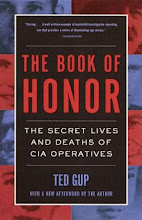
Clive Nutting’s Luft Stalag POW III Watch” - Lot# 311
A Treasure of Unpublished POW Momentoes

During his five-year captivity, Clive “Nobby” Nutting kept a war log filled with drawings, cartoons and photographs depicting life in World War II’s most famous prisoner-of-war camp, Luft Stalag III — scene of the Great Escape.
He starts his scrapbook book with a colored drawing that sums up his time in action prior to his capture on March 28, 1940, south of Dunkirk. It shows him clinging desperately to a damaged telegraph pole, trying to establish communications as bombs and shells rain down on a battle-torn landscape. A “Stuka” dive-bomber hovers menacingly overhead.

Nutting had joined the Royal Corps of Signals — the army’s communications engineers — in 1935, as a part-time soldier in the reservist Territorial Army.
By April 1940, Corporal Nutting was in France with the 44th Territorial division, part of the British Expeditionary Force (BEF) guarding the border with Belgium. On March 10, the Germans attacked, splitting the French armies, encircling the BEF, and forcing it in a tighter pocket around Dunkirk — the only port of evacuation.
On March 28, the Germans overwhelmed Nutting’s rearguard position near Cassel, a strategic communications centre. That night, the remnants of his 44th division managed to slip away. Some were among the 340,000 British and French troops evacuated from Dunkirk.
A series of official letters evokes the agony that Clive Nutting’s parents must have felt when they discovered their son hadn’t got back from Dunkirk. First he’s posted missing, and it’s not until September 12, 1940 that they know he’s a prisoner-of-war.
We next see Nutting in a press photograph published in an American men’s magazine.
He’s a haggard and exhausted prisoner on a cold, hungry march through Belgium and Germany to captivity. German soldiers hold their rifles at the ready. A contemporary handwritten account among his mementoes speaks of potato fields being stripped bare as the prisoners march over them, and of POWs being machine-gunned as they steal milk from a cow.

From June to September 1940, Nutting is incarcerated at Stalag VIIIB in Lamsdorf. Then he’s moved to Stalag Luft I at Bart on the Baltic, where he stays until 1942. He spent from 1942 to 1945 at Stalag Luft III in Upper Silesia, where he was the camp shoemaker. At the end of January, he was evacuated ahead of the advancing Russians across Germany to Westertimke on the North Sea, and spent the remaining few weeks of his captivity at the Milag Nord camp for captured merchant seamen.
The drawings and watercolours of camp life are typical of the British serviceman’s humour-in-adversity: we see Nutting distilling 100-octane hooch from marmalade, or wondering whether to make potato substitute from bread or bread substitute from potatoes. One accomplished artist contributed a cartoon of a young man hurrying upstairs, a packet of ice-cream in one hand and dragging a scantily clad lady in the other, and urging: “Hurry darling! Before it gets soft!” But there’s also a grimly detailed pencil drawing of a camp watchtower, and series of watercolours of the forced march out of Luft Stalag III in midwinter 1945. First the POWs struggle through snow dragging a sled. Then the snow melts and they have to carry their loads. A dramatic drawing records an attack by a RAF Mosquito aircraft on February 22, 1945.
Apart from the unpublished collection of POW art, there are a number of photographs with Nutting and his fellow POWs behind barbed wire, standing next to their huts or at work mending shoes. Nutting was in a way better off than many POWs. His job as cobbler kept him occupied. In wartime, your boots are your best friends, gold to the prisoners and their guards alike. He was undoubtedly popular, judging from the contributions to his scrapbook, and his evident sense of humor — natural in a Londoner — would have helped keep up the morale.
The Great Escape — A Game Turned to Tragedy
Of all Clive Nutting’s mementoes of prisoner-of-war life, none is more poignant than an illustrated poem depicting the tragic escape from Luft Stalag III in March 1944.
The verse was penned by an Australian airman when the camp learned that the Nazis had murdered 50 of the escapers. Accompanied by a detailed drawing of the tunnel beneath the camp, it expresses the outrage and defiance of the POWs in typical Aussie style.

“…Fifty fine fellows
With good stout intentions
Trusting no doubt in the Geneva Conventions
Reckoning not with he mind of the Hun
Fifty fine fellows — and now there are none.
“Will we forget — or pardon this? Might we?
I’ll wager a bet — ‘Not bloody likely!’”
What became known as the Great Escape was an ambitious plot launched in early 1943 to get up to 250 POWs out of Stalag Luft III through tunnels beneath the wire. The mass breakout was designed to tie up as much of the German resources as possible in hunting the escapers.
Masterminded by Squadron Leader Roger Bushell, a South African, it quickly grew to a massive undertaking, employing more than 500 of the camp’s artisans in the production of escape equipment — civilian clothes, German uniforms, compasses, rations and hundreds of forged documents and maps.
The escape organisation built, stole or extorted tools, ventilation and lighting equipment for the tunnel engineers. The operation, under the noses of the Germans, required elaborate security and a constant monitoring of guards and patrols.
As a shoemaker with well-equipped workshops at his disposal, a specialist in signals and an experienced “Kriegie” (POW), Nutting was part of the escape organisation from the start, making civilian belts, shoes and briefcases for the escapers out of leather stolen from his German clients.
Nutting had already been involved in the ingenious “Wooden Horse” escape from Luft Stalag III in the summer of 1943. The POWs had started a tunnel from beneath a vaulting horse built out of Red Cross cases. Every day they carried the horse, with a man hidden inside it to the same spot in the prison compound near the perimeter wire. While the prisoners vaulted, the man inside dug the tunnel. Nutting was one of the “penguins” who dispersed the earth dug out of the tunnel by dropping it out of bags inside his trousers. The three escapers — F/Lt Eric Williams (who wrote a book about the escape), Lt Michael Codner and F/Lt Oliver Philpot got home via Sweden.
After the war, Nutting acted as consultant for both the 1950 Wooden Horse movie and the Great Escape of 1963.

The Wooden Horse (1950)
Cast: Leo Genn ; David Tomlinson ; Anthony Steel ; David Greene ; Peter Burton.

The Great Escape (1963)
Cast: Steve McQueen, James Garner, Richard Attenborough, James Donald,
Charles Bronson, Donald Pleasence, and James Coburn.
The real Great Escape started with the launch of three tunnels, “Tom”, “Dick” and “Harry,” each starting in a barrack hut, through the concrete foundations of the stove or shower because the huts themselves were elevated on stilts. “Tom” was discovered, and “Dick,” abandoned and used for hiding escape kits. All energies were concentrated on “Harry,” dug 10 metres deep to avoid German tunnelling detectors and more than 100 metres long to come out in the pine forest beyond the wire.
The breakout through Harry was scheduled for the moonless night of March 24, 1944. It started with the disappointment at seeing the tunnel emerge well short of the pine forest in an open snow-covered area patrolled by German sentries. Having to wait for the sentries to pass, a power blackout and tunnel collapses slowed the throughput to barely a dozen men an hour instead of the planned one a minute.
By dawn 76 POWs had got out. The next man emerged from the tunnel under the feet of the sentry.
All but three of the 76 were recaptured. Hitler was so furious at the breakout that he ordered them all shot. Eventually, Goering, head of the Luftwaffe and responsible for the prisoners, persuaded him to limit the number to more than half. Thus 50 prisoners of war were handed over to the Gestapo and killed.
For the British, this had started out as a game, as the verse commemorating the tragedy makes clear:
“Bloody fine fellows
To prove this was done
Set out for freedom,
And thought it was fun.”
That the Germans should not play the game by the rules — in this case the Geneva Conventions — was deeply shocking to the British, who made great efforts to bring the perpetrators to justice after the war. The Royal Air Force Special Branch managed to track down 18 of the murderers: 14 were sentenced to death and one escaped the gallows by committing suicide.
The killing of the recaptured POWs was embarrassing to the Luftwaffe, which had meticulously respected the Geneva Conventions in the treatment of their British prisoners, mindful of the fact that many of their downed airmen were in British camps. As a gesture, the Luftwaffe allowed the Stalag Luft III POWs to build a memorial to their murdered comrades.
Nutting’s scrapbook contains a sensitively drawn post-card of the fine memorial to the 50 airmen, which still stands at the camp site, now in Zagan, part of Poland.
- Alan Downing













































SL,
ReplyDeleteThanks for this series. I've enjoyed reading it. I've always enjoyed my Grandpapa's WW2 stories of the Danish Resistance & the bridge to freedom of sneaking all the jews out of Danmark under the noses of the Germans. Have heard his stories of how tuff the Americans & Brits had in the prison camps & all this has made me realize I'll never complain about the WiFi, AC or heat being out in my b-hut again. We have it pretty easy these days compared to our ancestors.
Buzz
Re-reading after seeing link on WeaponsMan - a great series, thanks for putting it together.
ReplyDelete